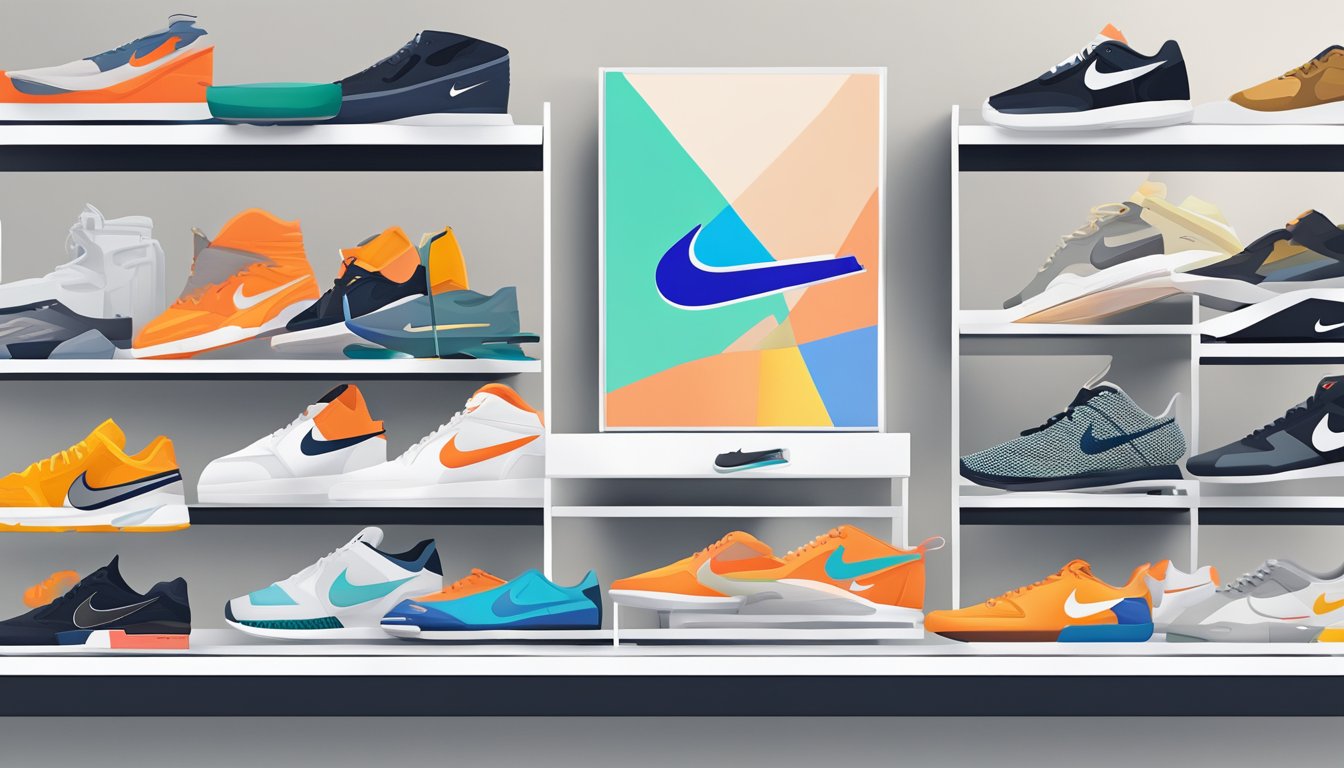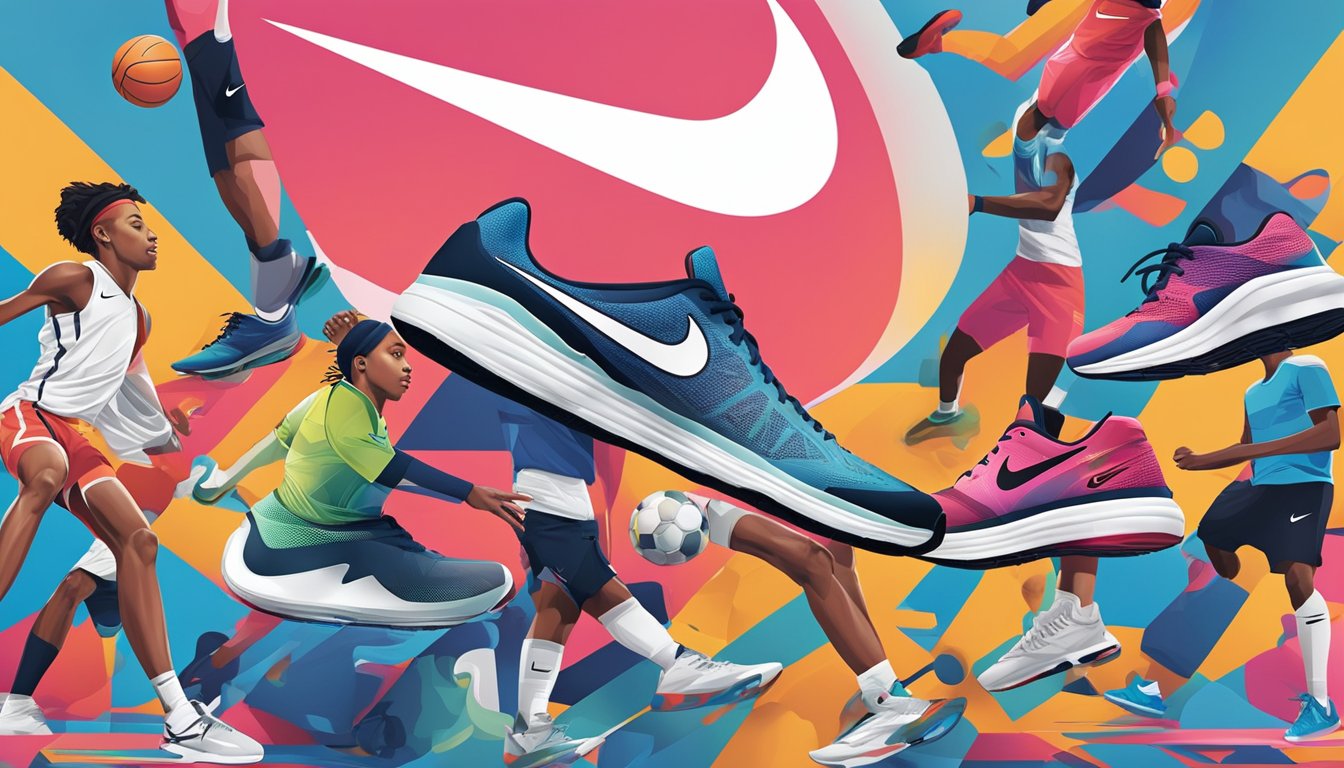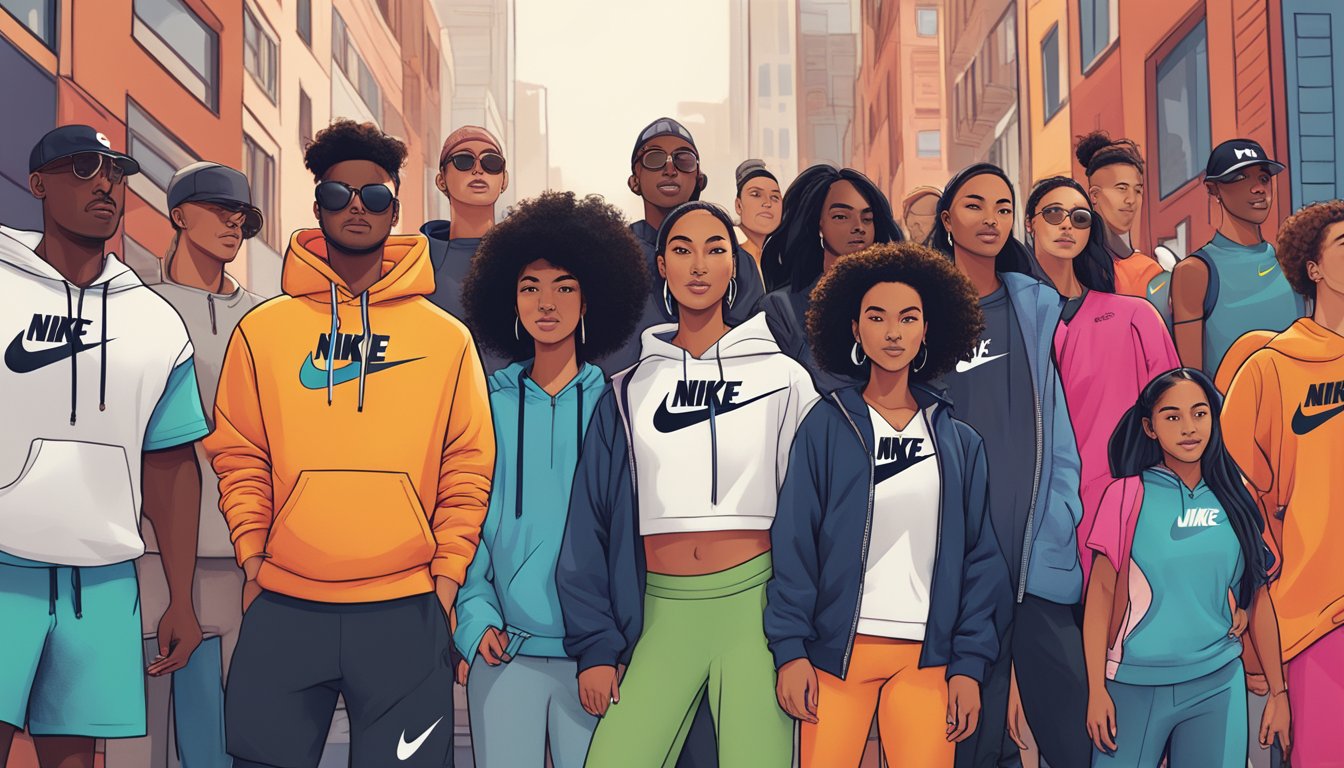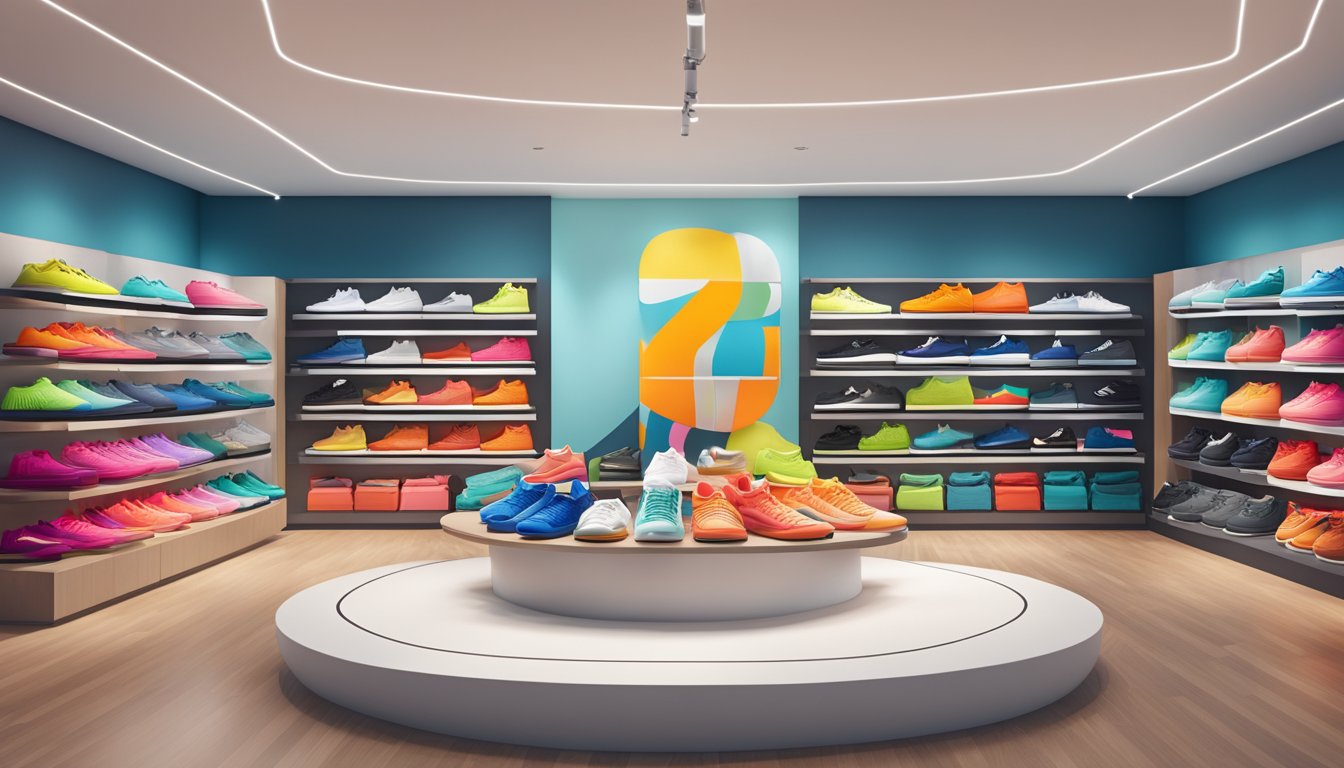You are probably familiar with the Nike brand as it is one of the most recognisable and popular sportswear brands in the world. Nike is known for its innovative products, stylish designs, and athletic sponsorships. But there is much more to the Nike brand than just its products. In this article, we will explore the history, impact, and strategies of Nike.

Nike was founded in 1964 by Bill Bowerman and Phil Knight. Originally known as Blue Ribbon Sports, the company started as a distributor of Japanese-made running shoes. In 1971, the Nike brand was born, named after the Greek goddess of victory. Since then, Nike has grown to become the world’s leading sports brand, with revenues of over $37 billion in 2020.
Nike’s success can be attributed to its iconic products, such as the Air Jordan and Air Max, as well as its focus on innovation and marketing. Nike has also made a significant impact on popular culture, with its products being worn by athletes and non-athletes alike. In the following sections, we will delve deeper into the history, products, and strategies of the Nike brand.
Key Takeaways
- Nike is a leading sportswear brand known for its innovative products, stylish designs, and athletic sponsorships.
- The company was founded in 1964 as Blue Ribbon Sports and became Nike in 1971.
- Nike’s success can be attributed to its iconic products, focus on innovation and marketing, and impact on popular culture.
History and Founders

Nike is a globally renowned brand that has been around for decades. The company has a rich history that has seen it grow into one of the most recognisable brands in the world. In this section, we will explore the origins of Nike and the individuals behind the brand.
Blue Ribbon Sports Origins
Nike was originally known as Blue Ribbon Sports (BRS) when it was founded in 1964 by Phil Knight and Bill Bowerman. The company started as a distributor of Japanese-made shoes, and its first retail store was opened in Santa Monica, California. The company’s focus was on providing high-quality running shoes to athletes.
Bill Bowerman and Phil Knight
Bill Bowerman and Phil Knight were the co-founders of Nike. Bowerman was a track-and-field coach at the University of Oregon, while Knight was a middle-distance runner who had competed under Bowerman. The two had a shared passion for running and a desire to create high-quality running shoes.
Knight initially approached Bowerman with the idea of importing Japanese running shoes to the US. Bowerman agreed to the idea, and the two started Blue Ribbon Sports. The company was a success, and in 1971, it was rebranded as Nike.
The Swoosh Evolution
The Nike Swoosh is one of the most recognisable logos in the world. The logo was designed by Carolyn Davidson, a graphic design student at Portland State University. Davidson was initially paid $35 for her design, but she later received stock options that made her a millionaire.
The Swoosh has undergone several changes since its inception. The original design was a simple check mark, but it has since been refined and modernised. Today, the Swoosh is a symbol of Nike’s commitment to innovation and quality.
Overall, Nike’s history is a testament to the passion and vision of its founders. The company has grown from a small distributor of Japanese shoes to a global brand that is synonymous with quality and innovation.
Iconic Products and Design

Nike is a brand that is synonymous with iconic products and innovative design. From sneakers to sportswear, Nike has consistently pushed the boundaries of design and technology to create products that are both stylish and functional.
Air Jordan Phenomenon
The Air Jordan range is one of Nike’s most iconic and successful product lines. Launched in 1985, the Air Jordan 1 was designed by Peter Moore and worn by basketball legend Michael Jordan. The Air Jordan range has since become a cultural phenomenon, with each new release generating huge excitement among sneakerheads and basketball fans alike. The Air Jordan range has also been a platform for collaboration with designers such as Virgil Abloh, whose Off-White x Air Jordan 1 collaboration was one of the most sought-after releases of 2017.
Air Max Innovation
The Air Max range is another of Nike’s most iconic product lines, known for its innovative use of air cushioning technology. The Air Max 1, designed by Tinker Hatfield and released in 1987, was the first sneaker to feature visible air cushioning. The Air Max range has since evolved, with each new release incorporating new design elements and materials. The Air Max range has also been a platform for collaboration with designers such as Sean Wotherspoon, whose Air Max 1/97 collaboration was one of the most popular releases of 2018.
Nike Dunk and Skateboarding
The Nike Dunk was originally released in 1985 as a basketball shoe, but it has since become a staple of the skateboarding community. The Dunk’s durable design and comfortable fit make it a popular choice for skateboarders, and Nike has released a number of Dunk collaborations with skateboarding brands and professional skateboarders. The Nike SB Dunk range has also been a platform for collaboration with designers such as Jeff Staple, whose “Pigeon” Dunk release in 2005 caused a frenzy among sneakerheads.
Nike’s commitment to innovative design and collaboration has made it one of the most successful and influential brands in the world of sportswear. Whether you’re a sneakerhead, a basketball fan, or a skateboarder, there’s a Nike product for you. So go ahead, lace up a pair of Nikes and get ready to “Just Do It”.
Athletic Sponsorships and Endorsements

Nike’s investment in athlete sponsorships and endorsements has been a key component of the brand’s success. Nike has partnered with some of the most influential athletes in the world, from basketball superstars to tennis and golf ambassadors.
Basketball Superstars
Basketball has been a key focus for Nike, with the brand sponsoring some of the biggest names in the sport. LeBron James, one of the most recognizable basketball players in the world, has been a Nike athlete since 2003. His signature line of shoes, the LeBron James collection, has been a popular choice for basketball players around the world.
Nike has also partnered with other basketball superstars, including Kevin Durant and Kobe Bryant. The brand’s Jordan Brand line, which was created in partnership with Michael Jordan, has become a cultural icon and has been a major contributor to Nike’s success.
Global Football Influence
Football, or soccer, has a massive global following, and Nike has capitalized on this by partnering with some of the sport’s biggest names. Cristiano Ronaldo, one of the most successful football players in history, has been a Nike athlete since 2003. Nike has also partnered with other football superstars, including Neymar Jr. and Kylian Mbappé.
Tennis and Golf Ambassadors
Nike has also made significant investments in tennis and golf, partnering with some of the sport’s biggest names. Serena Williams, one of the most successful tennis players in history, has been a Nike athlete since 2003. Her line of Nike tennis apparel has been a popular choice among tennis players around the world.
In golf, Nike has partnered with Tiger Woods, one of the most successful golfers in history. Woods has been a Nike athlete since 1996, and his signature line of golf shoes has been a popular choice among golfers around the world.
Overall, Nike’s investment in athlete sponsorships and endorsements has been a major contributor to the brand’s success. By partnering with some of the most influential athletes in the world, Nike has been able to create a strong connection with consumers and establish itself as a leader in the athletic apparel industry.
Business and Marketing Strategies

Nike, a global leader in athletic footwear, apparel, and accessories, has been dominating the market for decades. Their business and marketing strategies have been instrumental in their success. In this section, we will discuss some of their key strategies and how they have helped Nike stay ahead of the competition.
Rivalry with Adidas
Nike and Adidas have been fierce rivals in the athletic apparel market for years. However, Nike has managed to outperform Adidas in terms of sales and revenue. In 2023, Nike’s revenue was $58.7 billion, whereas Adidas’ revenue was $27.2 billion. This shows that Nike’s business strategies have been more effective than Adidas’.
Sales and Revenue Growth
Nike has seen consistent sales and revenue growth over the years. In 2023, Nike’s online sales grew by 42%, and their overall sales grew by 13%. This growth can be attributed to their customer-centric marketing strategies, which focus on building a strong brand image and connecting with their target audience.
Digital Transformation
Nike’s digital transformation has been a key factor in their success. They have invested heavily in analytics and technology to better understand their customers and improve their marketing strategies. In 2023, Nike appointed John Donahoe as their new CEO, who has a strong background in technology and analytics. This move shows Nike’s commitment to digital transformation and using data to drive their business strategies.
In conclusion, Nike’s business and marketing strategies have been instrumental in their success. They have managed to outperform their competitors, such as Adidas and Puma, by focusing on customer-centric marketing and investing in digital transformation. With their strong brand image and commitment to innovation, Nike is poised to continue dominating the athletic apparel market for years to come.
Cultural Impact and Community

Nike is a brand that has had a significant cultural impact around the world. The company’s iconic “Just Do It” slogan has become synonymous with motivation, perseverance, and success. Nike’s success in the sneaker industry has led to the creation of a unique sneaker culture and fashion trend that has taken the world by storm.
Sneaker Culture and Fashion
Nike’s sneakers have become a fashion statement and a status symbol. The brand has collaborated with famous designers and celebrities to create unique and limited-edition sneakers that are highly sought after by sneaker enthusiasts. The company’s customisation service, “Nike by You”, allows customers to design their own sneakers, adding a personal touch to their footwear.
Social Initiatives and Controversies
Nike has made significant efforts to support social initiatives and promote diversity, equity, and inclusion. The company has pledged to increase diversity among its employees and has invested in programmes that support underprivileged communities. However, Nike has also faced controversies, including allegations of using sweatshops and exploiting workers in developing countries.
Brand Loyalty and Membership Rewards
Nike has a loyal customer base that is willing to pay a premium for the brand’s products. The company has created a membership program, NikePlus, that rewards customers for their loyalty. Members receive exclusive access to new products, early access to sales, and other benefits.
Overall, Nike’s impact on culture and community is undeniable. The brand’s success in the sneaker industry has led to the creation of a unique sneaker culture and fashion trend. While the company has faced controversies, Nike has made significant efforts to support social initiatives and promote diversity, equity, and inclusion. As a result, Nike has a loyal customer base that is willing to pay a premium for the brand’s products.
Frequently Asked Questions

What’s the story behind the iconic Nike swoosh logo?
The Nike swoosh logo was designed in 1971 by Carolyn Davidson, a graphic design student at Portland State University. The logo was created to represent the wings of the Greek goddess of victory, Nike. The logo has since become one of the most recognisable logos in the world and is synonymous with the Nike brand.
How did Nike revolutionise athletic footwear and apparel?
Nike revolutionised athletic footwear and apparel by introducing innovative technologies and designs. The company’s commitment to research and development has led to the creation of some of the most iconic sneakers of all time, such as the Air Max and Air Jordan lines. Nike has also been at the forefront of creating apparel that is both functional and stylish, making it a favourite among athletes and fashion enthusiasts alike.
Who founded Nike and what was their vision?
Nike was founded in 1964 by Bill Bowerman and Phil Knight. Bowerman was a track and field coach at the University of Oregon, while Knight was a student and athlete at the same university. The two men shared a passion for athletics and a desire to create innovative products that would help athletes perform at their best. Their vision was to create a company that would be at the forefront of athletic innovation and design.
What are the latest innovations in Nike’s sportswear?
Nike is constantly pushing the boundaries of athletic innovation, and the company’s latest products reflect this commitment. Some of the latest innovations in Nike’s sportswear include Flyknit technology, which provides a lightweight and breathable fit, and Nike React foam, which provides a responsive and cushioned ride. Nike has also introduced new designs and colourways for some of its most iconic sneakers, such as the Air Max and Air Jordan lines.
How does Nike’s commitment to sustainability shape their product lines?
Nike is committed to sustainability and has made significant strides in reducing its environmental impact. The company has introduced sustainable materials into its products, such as recycled polyester and organic cotton, and has implemented environmentally friendly production processes. Nike has also launched several initiatives aimed at reducing waste, such as the Reuse-A-Shoe programme, which turns old sneakers into new products.
What role does Nike play in promoting sports for women and men globally?
Nike is committed to promoting sports for women and men globally and has launched several initiatives aimed at increasing participation in sports. The company has partnered with organisations such as Girls on the Run and the Women’s Sports Foundation to provide opportunities for girls and women to participate in sports. Nike has also launched campaigns such as “Dream Crazier”, which celebrates female athletes and encourages girls to pursue their athletic dreams.




